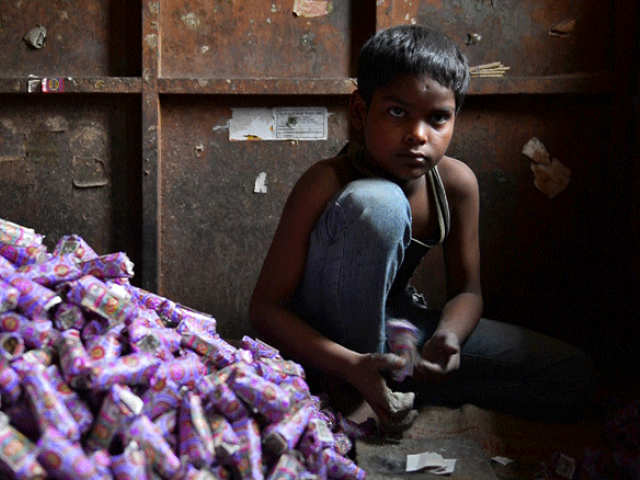
After working 15-hour days in a sweet shop with little time off, Marimuthu had a bad headache one day and asked for a break. The shop owner refused, shouted at him and threw a pan of hot oil over his legs, he said. Days later, he ran away.
He was 12-years-old and wanted to liberate slaves in Pakistan. He is dead now
The 15-year-old is one of nearly 16 million people in India who have been forced into manual labor, trafficked into brothels, stuck in debt bondage or born into servitude, according to the 2014 Global Slavery Index.
Most of them are unpaid or held in debt bondage, like Marimuthu, who was sent to the western Indian state of Maharashtra three months ago from his home in Madurai, in southern Tamil Nadu state.
His mother needed to repay a 20,000 rupee ($290) debt and agreed to send her son to work at a sweet shop for one year. She was promised a total of 40,000 rupees ($580), half of which was given to her as an advance to pay off her debt. The rest was to be paid in November this year.
She was told the sweet shop would be in a nearby city, but her son was sent halfway across the country from Madurai in the south to Pundarpur in the west.
Bonded humans of Pakistan
"I started at six in the morning and worked till nine at night. I worked in a cramped space making sweets through the day and was allowed short breaks for my meals," Marimuthu said.
"I had a terrible headache that day and needed to sit down. The shop owner would not allow it. He verbally abused me before picking up the hot pan of oil and throwing it on me," he told the Thomson Reuters Foundation in a telephone interview.
"After I was burned, I was escorted by a co-worker to my room and some of the gram flour paste we use for cooking was applied to cool the wound. The pain didn't subside."
After trying to go on working, Marimuthu finally took the 200 rupees ($3) he had put aside and ran away, traveling ticketless on trains for two days to get home.
He went to a hospital in Madurai on Feb 22 for treatment of severe burns on both legs.
"His case was brought to our notice through social workers at the hospital," said A Kathir of the non-governmental organization Evidence, who registered a formal complaint with the Madurai police.
"We are not confident of the boy getting justice because the crime happened in another state and there are jurisdiction issues," he said.
HONY raises $1.3 million to help end bonded labour in Pakistan
Marimuthu's case follows a pattern of exploitation in the region, activists said.
"Many adolescent boys from this region are taken to various parts of India to work in sweet shops because sweetmakers from here are famous. The units are all run by owners from this region as well," said T Kuralamuthan of non-profit organization International Justice Mission.
"The first crackdown happened when some boys escaped from northern Indian states in 2011 and came back. Since then many boys have escaped and 60 were also rescued by the Tamil Nadu police in subsequent years."
Most boys, like Marimuthu, drop out of school after grade six and start work.
Marimuthu said he wanted to finish his studies - but then said his mother had died a month earlier, his father was an alcoholic and he had two younger brothers going to school.
"Maybe I will have to go back to work," after being discharged from hospital, he said.





1732780399-0/Untitled-design-(3)1732780399-0-270x192.webp)
1732772730-0/BeFunk_§_]__-(63)1732772730-0.jpg)

1726644416-0/TikTok-(2)1726644416-0-270x192.webp)








COMMENTS (1)
Comments are moderated and generally will be posted if they are on-topic and not abusive.
For more information, please see our Comments FAQ